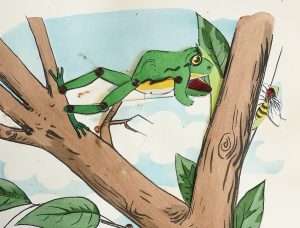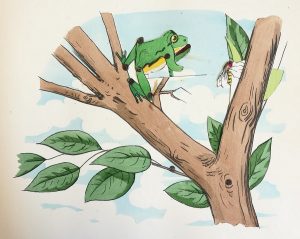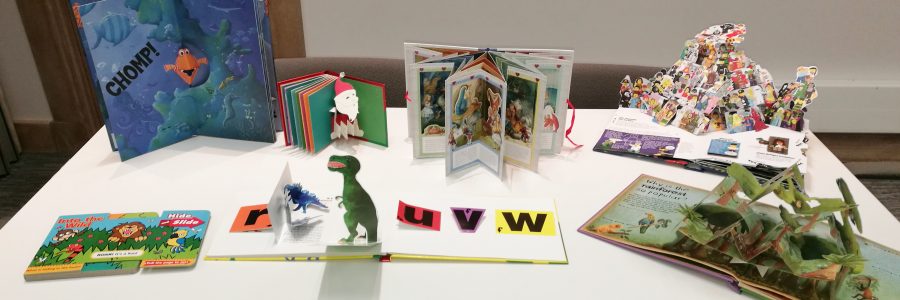
Start them young: close encounters with movable books
As Special Collections curators and subject specialists we’re all used to hosting visits to the University Library for academics, students and members of the adult public. This week I had a more challenging audience; a group of 8- and 9-year-olds in Year 4 from St Alban’s Primary School in Cambridge. This half term their Design and Technology topic is movable books, and one of the main aims of this is to write, design and construct their own books. Where better to come for inspiration than the University Library? Our legal deposit holdings provide an immense range of books with pop-ups, pull tabs, lift-the-flap and other movable parts for the pupils to get hands-on experience of some of the more complex examples of the art.
I began by using the Library’s recently-acquired visualiser to demonstrate some very early movable books, including an incunable with a volvelle for predicting the movements of planets, and the famous pyramid templates in Euclid’s Elements. The class correctly noted that these books were definitely not for children, and there was a pleasing “Ooooh!” on discovering that one of them was over 500 years old “and it still works!”. Next came the hands-on part of the session, getting to grips with a huge variety of pop-up and movable books, all from the last 5 years or so. The pupils were delighted to learn that they were the first children, and possibly the first readers of any age, to lift the flaps and pop the pop-ups of these items. Four displays were a carefully-supervised free-for-all, and the last was a demonstration table of books from the late 19th century, including a wonderfully preserved 1890 Meggendorfer book of animals. The frog was very popular leaping across the page to catch the wasp, and the children were curious to work out how this multi-stage action might be possible. Running their fingers carefully over the back of the page, they were able to feel the spiral hinges and the cardboard tabs that controlled the complex movement. One of Meggendorfer’s books can be seen in action in this tweet.
The more recent books included some simple mouth folds (as with the fish at the heart of the story of Fish food) and carousel books (illustrating Alice in Wonderland), extending to the more complex and elegant paper engineering of Robert Sabuda and the truly towering Lego universe, whose tallest pop-up extends to a stupendous 57 cm. The children looked carefully at the fronts, backs and insides of the movable parts wherever possible, to understand how they worked and to take ideas of what they might create themselves. They also thought about the different experiences provided by different movable parts; some are there simply to illustrate a story, while others (particularly in non-fiction books) enable the reader to discover information in an interactive way, to visualise an event or object, or to give a surprise. Plans were coming together across the room for some hugely ambitious books, with careful consideration given to how flaps, volvelles and pull tabs could play roles in the various stories and non-fiction works being imagined.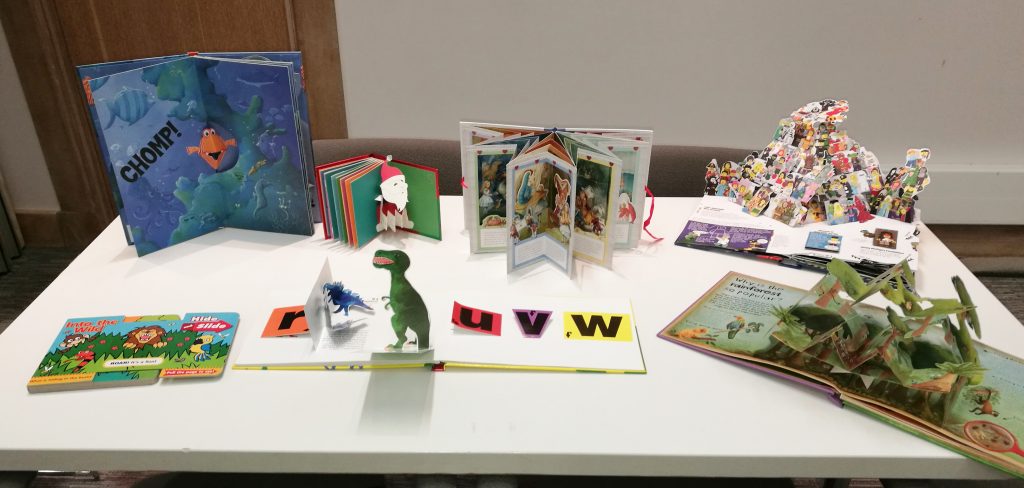
After the hands-on session, the group then made their own pop-ups, working at this early stage in the topic with the two most simple types, a box fold and a mouth fold. The primary lesson learned from this was that it is vitally important to follow all steps of the instructions; failing to sharpen the folds led to tangled pop-outs and frustration, and the children were very determined to get this right. After mastering the basic technique, numerous fantastic creations emerged, ranging from birthday cakes and Christmas trees to rainbows, dragons and even a Minecraft Ronaldo.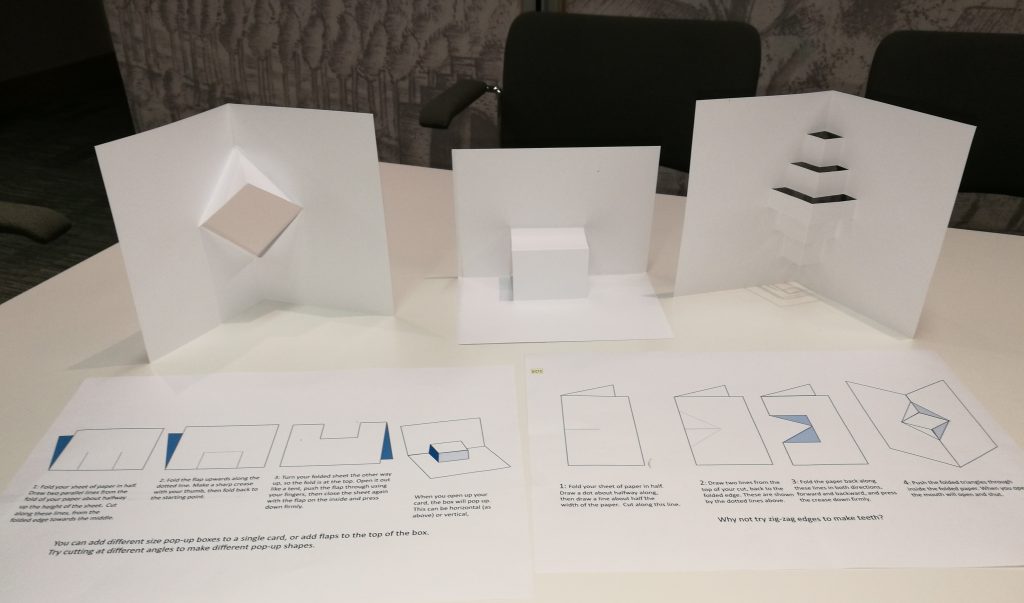

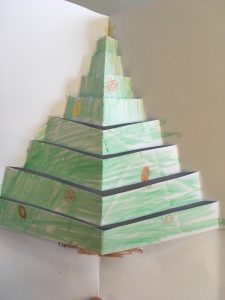 At the end of the session, we discussed what had worked well and how the children might take some of these ideas back to their own classroom to incorporate into their creations. Members of the various Special Collections departments are very happy to work with school groups of all ages; if you work with a school or know a teacher who would like to visit the University Library and enhance the learning experience through access to our holdings, please get in touch.
At the end of the session, we discussed what had worked well and how the children might take some of these ideas back to their own classroom to incorporate into their creations. Members of the various Special Collections departments are very happy to work with school groups of all ages; if you work with a school or know a teacher who would like to visit the University Library and enhance the learning experience through access to our holdings, please get in touch.
Thanks are due to my colleagues Sally Stafford and James Freeman for assistance in the planning and technical aspects of this session. There are many more movable books on display in our current exhibition, Tall Tales: The secrets of the tower.

